Brink
Splash Damage on the edge.
Whether he's cranking up the surround-sound for a thundering game demo, or just talking - something he does at speed and without pause, reeling off a five-minute answer to one question that covers the next three you were going to ask and two you hadn't thought of - Splash Damage's Paul Wedgwood likes to, in Public Enemy's words, bring the noise. At 9.30am on the morning after the night before, that causes a few winces. Although, to be fair, it looks like it's hurting him more than it hurts us.
Wedgwood doesn't lower the volume for a second, though. When it comes to Brink, the goatee-bearded head of the Bromley studio that grew from a PC mod community is a tireless salesman, a regular PT Barnum. Perhaps he feels like he's still got a lot of explaining to do, and perhaps he's right.
Brink is part of a growing trend for games that seek to blur the line between single-player and multiplayer. Since Halo 3 extended a lobby system and support for four players across its entire campaign in 2007, and Valve turned a simple survival shooter into the endlessly replayable standard-bearer for co-op gaming a year later with Left 4 Dead, developers have started to question why they needed two methodologies to make one game. Even the conservative heartlands of the Japanese industry have started to explore the idea - see Capcom's Lost Planet 2, out next week.
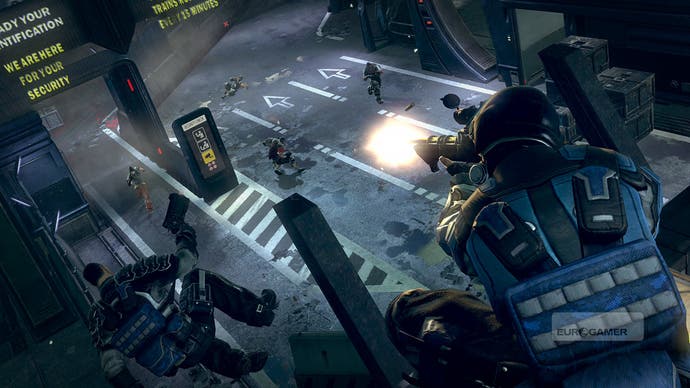
Brink, though, is probably the most extreme example of this approach to date, and as a specialist in competitive multiplayer design, Splash Damage is coming at the problem from the other side. Its objective-based campaign episodes have their roots in the design of the studio's Enemy Territory multiplayer games, and drop-in co-op goes all the way up to eight players. Wedgwood openly admits that he hopes to train more casual players up through single-player and co-op to taking on the complex ebb and flow of a Splash Damage team multiplayer match.
The challenge facing his team is to make this feel like a seamless and natural progression, to make the front end and user interface transparent, and to make a game structured around scalable multiplayer stand on its own in single-player against some of the most obsessively crafted experiences in gaming - the theatrical staging of a BioShock or a Modern Warfare, for example. It's a big ask, but winning over the large, naturally suspicious audience of die-hard solo gamers is going to rest on it.
For all Wedgwood's conviction and mile-a-minute patter, another noisy, hands-off demonstration isn't going to answer those concerns completely. But it does put forward two very strong arguments in favour of Brink winning its own personal war. One is presentational: the game simply looks and sounds terrific, and has an improved, attractive, streamlined interface. The other is in an irresistible character-customisation and upgrade trail that will help form the long-term player relationships Brink needs to succeed.

A quick recap: it's the year 2045 and we're aboard a floating city called the Ark, once a green utopia, now a conflict-torn dystopia after an environmental disaster befalls mankind. Two factions, Resistance and Security, squabble for control, and there's a complete campaign to play through for each. We've already seen the clean-cut Security soldiers invade the rusting container city that is home to the Resistance HQ. Now, Wedgwood and his colleagues don the cargo pants and bandanas of the Resistance's urban guerrillas to invade the bright, clean, hi-tech spaces of the Ark itself.
Splash Damage has pulled off the increasingly rare feat of creating an FPS with an unmistakeable and novel visual style. The cartoony, exaggerated features of the characters are the main feature of art director Olivier Leonardi's vision. The maps, though much more neutral, still have their distinct personality; brightly-coloured and well-lit under fresh sea skies, and with highly complex but well-defined geometry.
There are hints of Portal and Mirror's Edge about it, and in an echo of those two mould-breaking first-person games - particularly the latter - freedom to navigate the space is key to Brink. Splash Damage's one-button SMART (Smooth Movement Across Random Terrain, acronym fans) system allows you to sprint, vault, limbo and leap around the levels with ease, and without breaking the flow of the action.
"We've always believed that we shouldn't reward you for being good at an interface that sucks," says Wedgwood, and although some might argue that wasn't at all clear from Splash Damage's previous games, it certainly seems to be true now. It all looks wonderfully effortless.

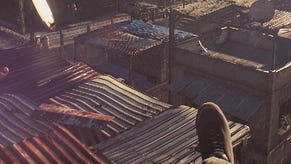
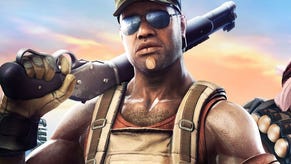
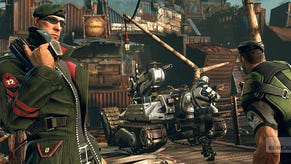



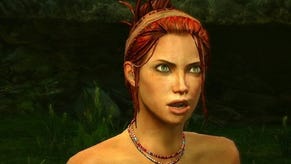


.png?width=291&height=164&fit=crop&quality=80&format=jpg&auto=webp)




.jpg?width=291&height=164&fit=crop&quality=80&format=jpg&auto=webp)
